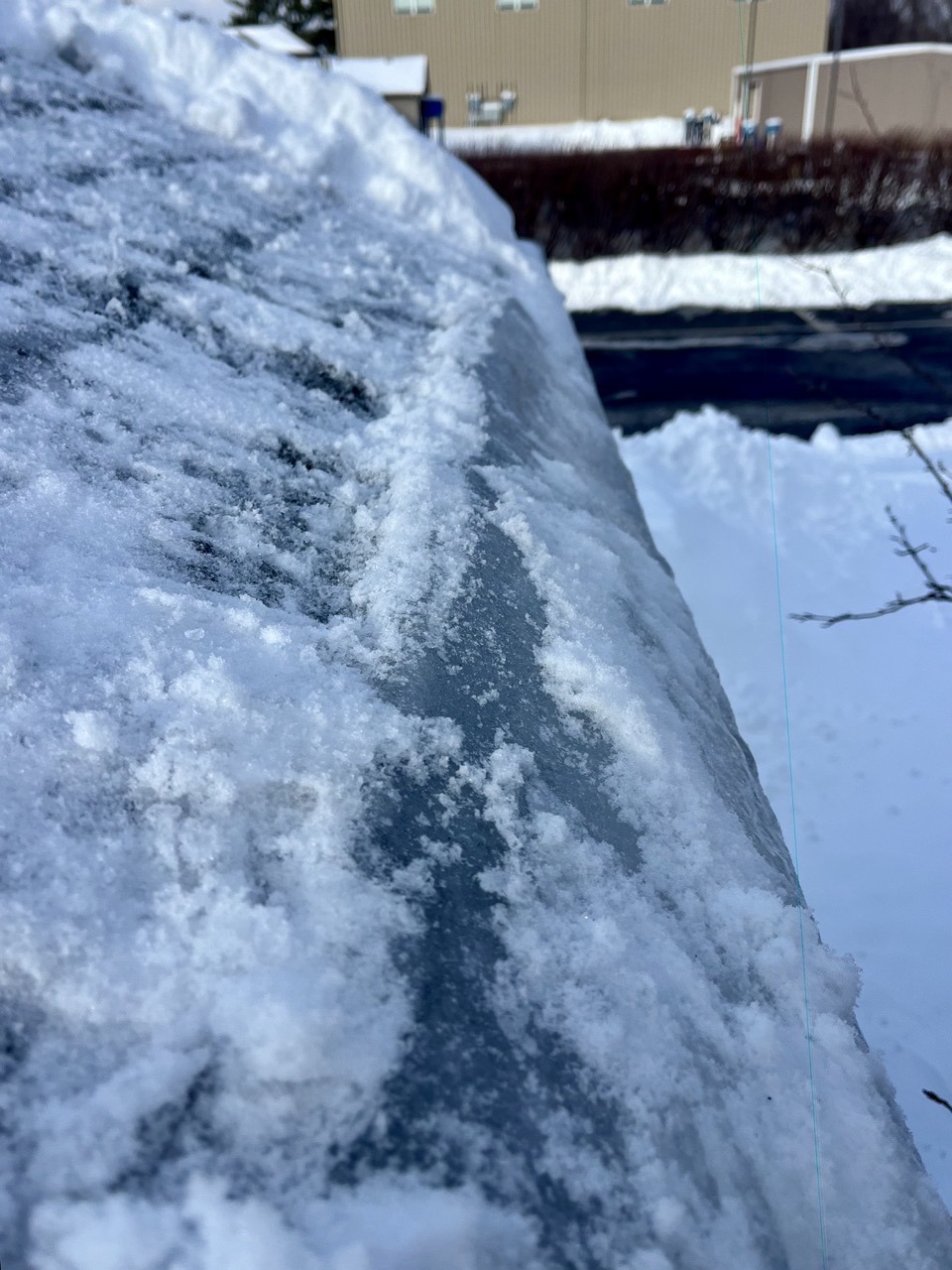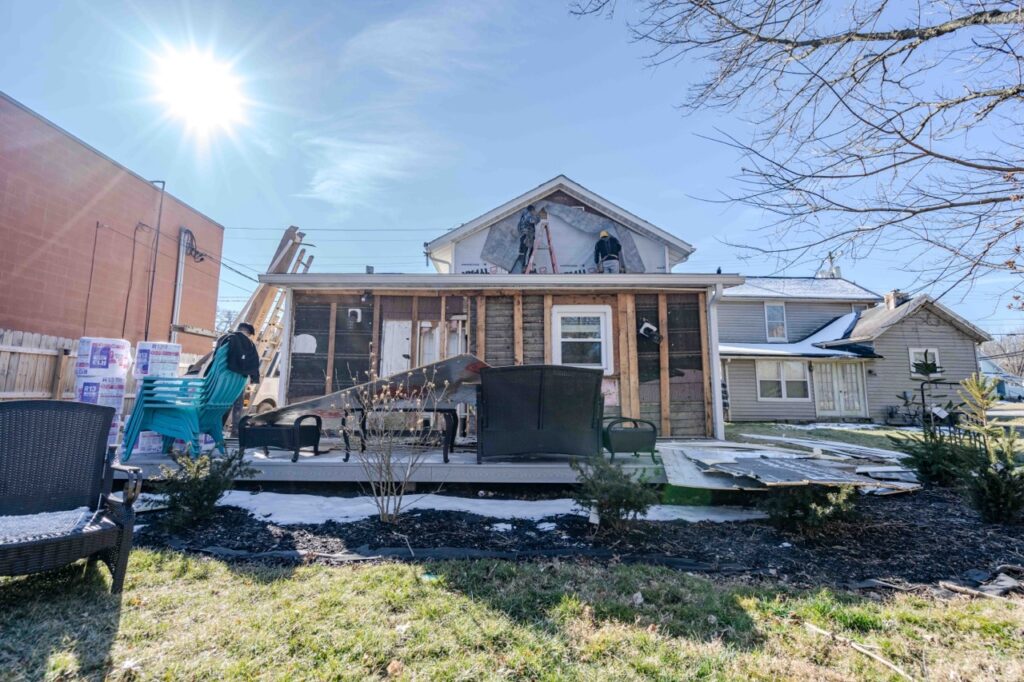Ice dams. Just the name conjures up images of frustration and potential disaster. In the Midwest, many Winters are warmer, others brutally cold and full of snow. Big snows bring a lot of additional weight and built up on roofs. Majority of houses are built for this, however it is not uncommon to see sizable ice dams that allow water to flow back into the house once the ice begins to melt. These icy barriers, forming along the eaves of your roof, can cause serious damage if left unchecked. They occur when snow melts on a warm roof, only to refreeze at the colder edges, creating an impenetrable wall of ice. This ice dam traps melted snow, preventing it from draining properly. The trapped water then seeks alternative paths, often seeping under shingles and into your home’s interior.
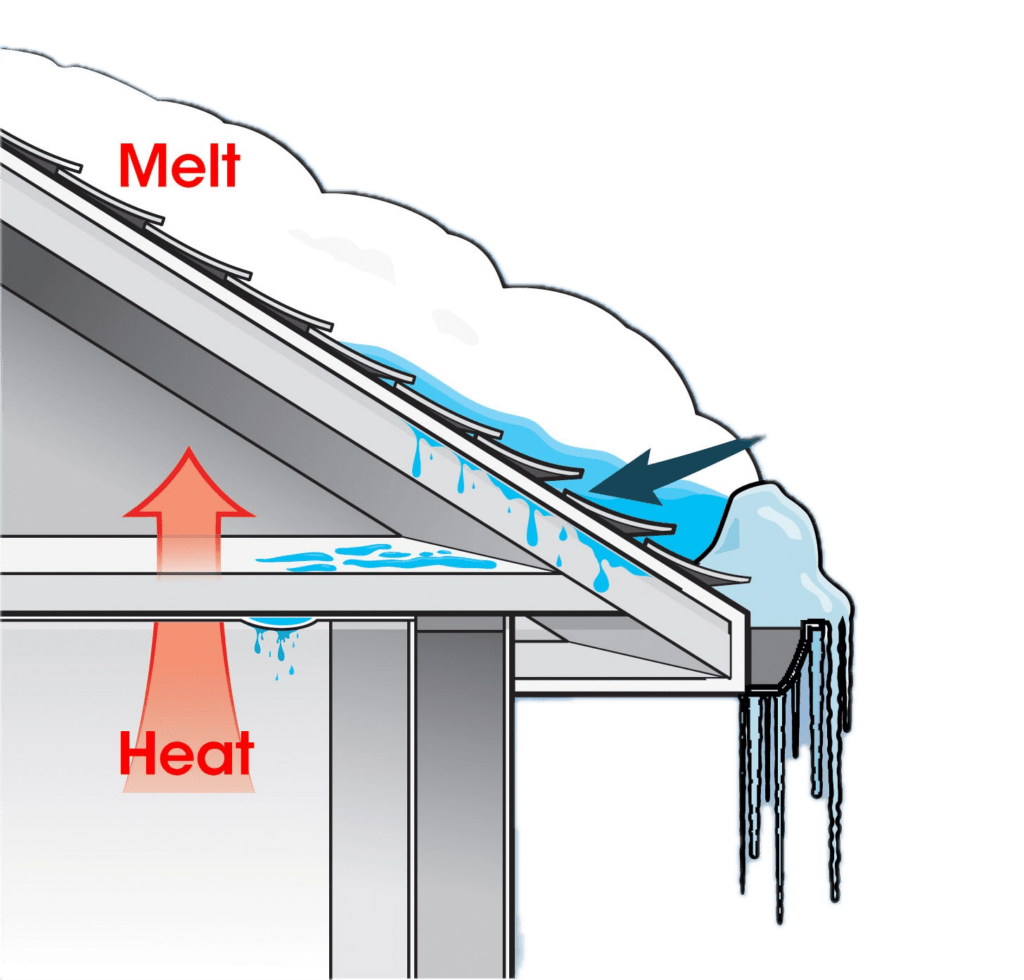
The Usual Suspects: Where Ice Dams Thrive
Ice dams aren’t random occurrences; they tend to target specific areas of your roof:
- Roof Valleys: Where two roof slopes meet, a natural trough is formed. This low point acts like a collection basin for snow and ice, making it a prime target for ice dam formation. The concentrated weight of ice and snow in these areas increases the risk of damage.
- Dormer Drama: Dormers disrupt the smooth flow of your roofline, creating pockets of varying temperatures. These temperature fluctuations can lead to localized snowmelt, which then refreezes at the colder eaves, forming an icy barrier.
- Chimney Challenges: Chimneys, like dormers, interrupt the roof’s surface, introducing potential weak spots. Heat loss around the chimney can contribute to localized snowmelt, increasing the likelihood of ice dam formation.
- Skylight Situations: While skylights bring in welcome natural light, they can also act as localized heat sources. This warmth can cause snow to melt around the skylight, and this melted water can then refreeze at the colder edges, creating an ice dam.
- Long Eave Overhangs: Homes with long eaves create a significant temperature difference between the warmer roof surface and the colder exterior wall. This temperature gradient increases the risk of snowmelt and subsequent ice dam formation.
- Attic Issues: Poorly insulated or ventilated attics allow heat to escape into the attic space, warming the roof surface. This excessive heat significantly increases the likelihood of snowmelt and the subsequent formation of ice dams.
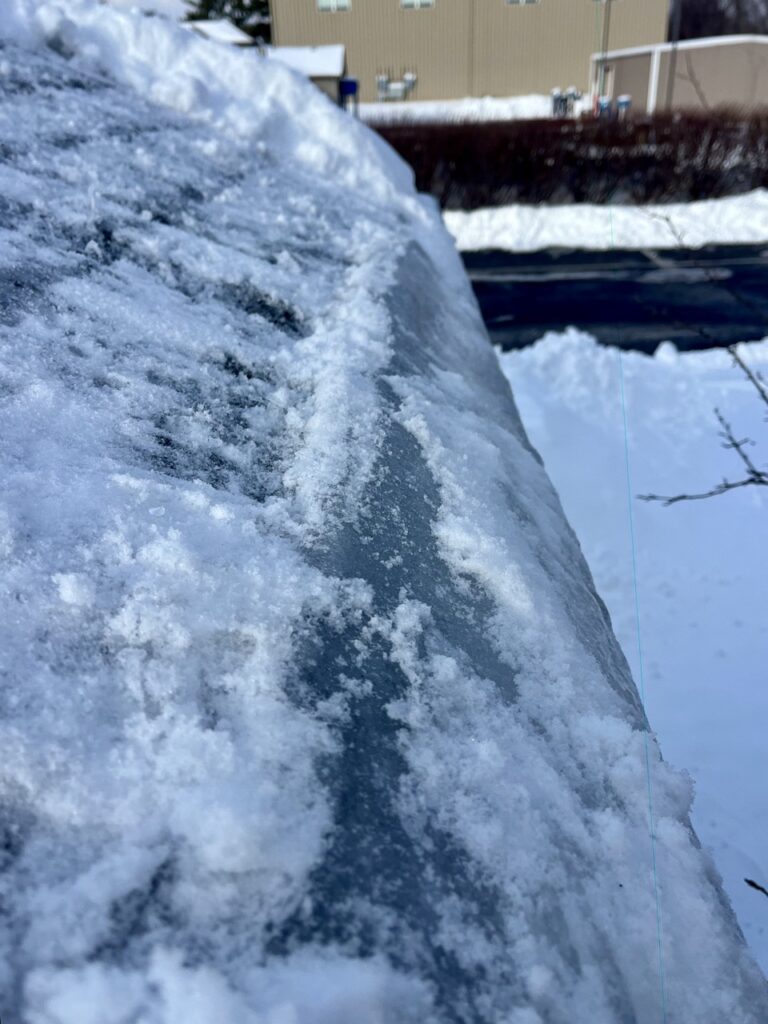
The Builder’s Dilemma: Why Ice and Water Shield Gets Shortchanged
While proper installation of ice and water shield is crucial for preventing ice dam damage, production builders may sometimes fall short. Here’s why:
- The Pressure of Time: Tight construction schedules often force builders to prioritize speed over meticulousness. This can lead to shortcuts in the installation of ice and water shield, such as inadequate overlap or insufficient coverage in critical areas.
- Budgetary Constraints: The constant pressure to minimize costs can incentivize builders to use less ice and water shield than recommended or to opt for cheaper, lower-quality materials. This can compromise the long-term protection of your roof.
- Lack of Quality Control: Insufficient oversight on the part of builders or homeowners can allow issues with ice and water shield installation to go unnoticed.
- The “Pretty Stuff” Syndrome: Production builders often prioritize visible features like siding and landscaping, which can overshadow the importance of less conspicuous elements like proper roofing underlayment.
Taking Matters Into Your Own Hands: Preventing Ice Dam Damage
Don’t become a victim of ice dam damage. Here’s what you can do to protect your home:
- Insist on Proper Installation: During construction, advocate for the use of high-quality ice and water shield in all vulnerable areas, including roof valleys, dormer penetrations, chimney flashing, and skylight surrounds.
- Attic Inspection: Ensure your attic is properly insulated and ventilated. This helps prevent excessive heat buildup in the roof, minimizing the risk of snowmelt.
- Regular Roof Checkups: Conduct regular roof inspections, especially after heavy snowfalls or during periods of fluctuating temperatures. Look for signs of ice dams, such as water stains on ceilings or walls, icicles hanging from the eaves, and evidence of water seepage around roof penetrations.
- Call in the Professionals: Schedule regular professional roof inspections to identify potential vulnerabilities and address any issues before they escalate. A qualified roofing contractor can assess your roof for ice dam risks and recommend appropriate preventative measures.
- Maintain Gutter Health: Keep your gutters and downspouts clean and free of obstructions to ensure proper water drainage away from your foundation.
By understanding the risks and taking proactive steps, you can significantly reduce the likelihood of ice dam formation and protect your home from costly water damage.
Here is What you can do
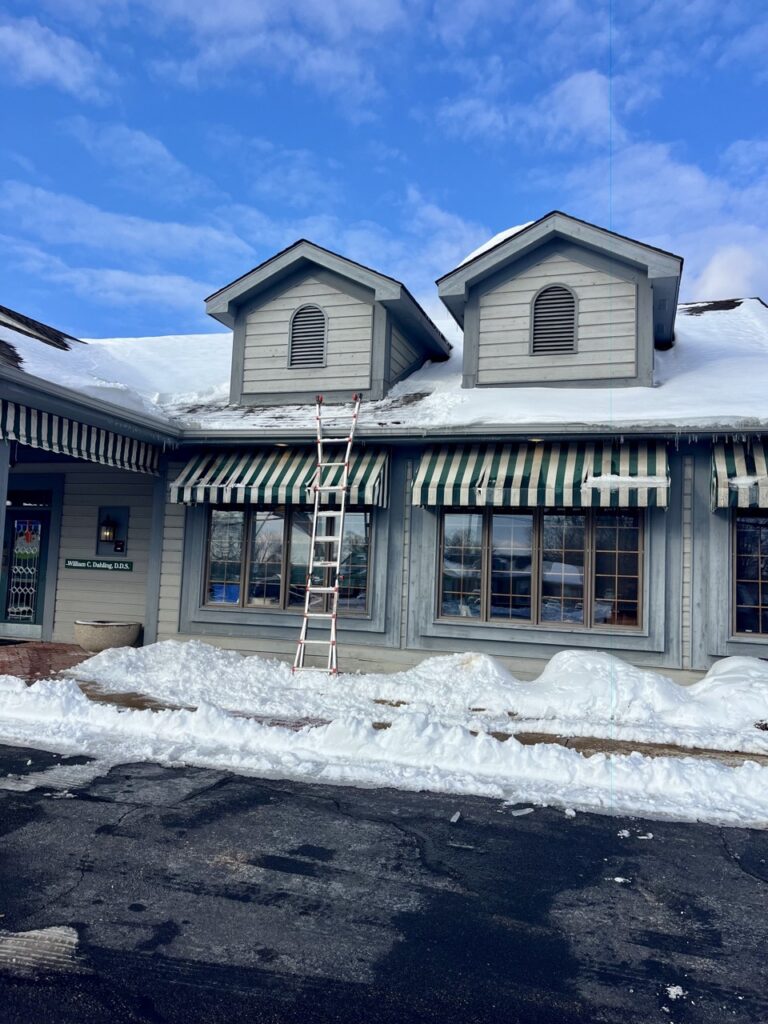
Unfortunately, once ice dams start forming and water begins to seep into your home, there’s not much you can do to stop the immediate flow of water. You’ll need to address the underlying issue with your roofer once the weather allows for safe repairs.
However, you can take steps to minimize the damage while you wait:
- Shovel Snow Away (If Safe): If accessible, carefully shovel snow away from the affected eaves to expose the ice to sunlight. This can help the ice break up more quickly as temperatures rise.
- Ice-Melting Sock Trick: Load up some salt in a sock or a similar fabric. Toss a few of these salt-filled socks onto different areas of the ice dam. The salt will help melt small pockets of ice, creating pathways for water to drain off the roof as the ice begins to thaw.
- Heat Tape (Proactive Measure): Consider installing heat tape or wire along your soffits. This self-regulating heat tape connects to an external outlet and helps prevent ice dams from forming in the first place. However, it’s most effective as a preventative measure before winter storms hit.
Important Note: Breaking up ice dams yourself is extremely dangerous. Climbing on a ladder during icy conditions significantly increases the risk of falls. This article is for informational purposes only. Proceed at your own risk and consider hiring a professional ice dam removal service.

